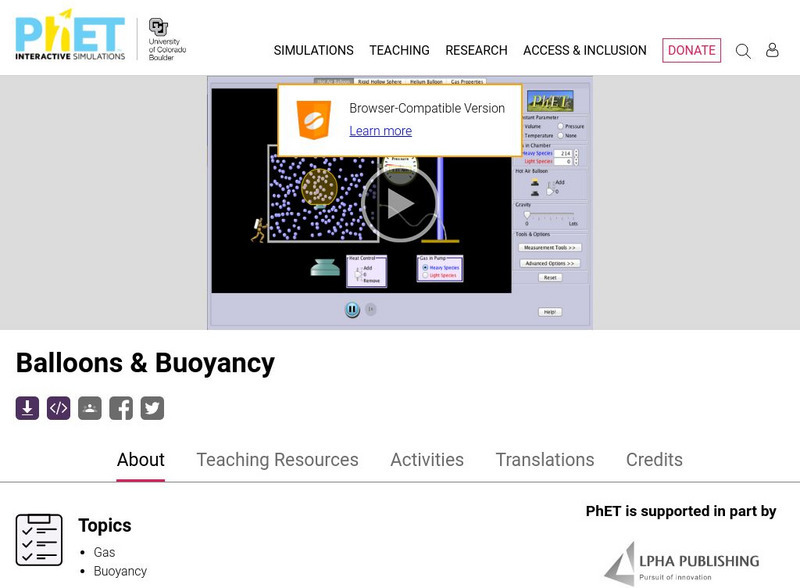Curated OER
Cartesian Diver Lab
In this Cartesian diver lab, learners explain using text and diagrams how the Cartesian diver works. Students evaluate ways in making their lab design better. Learners make predictions of how changing the variable would change the...
Curated OER
Chemistry: The Case of the Sunken Ice Cube
Students examine a density demonstration involving ice cubes and beakers of water and alcohol. After observing how one ice cube floats in water and sinks in alcohol, they determine which mixture of the two would suspend the ice cube in...
Curated OER
Floating Vegetables
Students design a craft that safely floats vegetables across a classroom. The teacher provides some materials, but the child may as well. As the experiment is created, they have to fill out worksheets to keep the actiivity organized....
Curated OER
Floating Pencil
Students discover how salt water makes a pencil float better than freshwater by measuring and comparing the lengths of the portion of the pencil that floats above the water surface. They then determine if an unknown water sample is...
Curated OER
Earth: The Water Planet
Students elicit data on the water cycle, ocean topography, and island formation in this six lesson unit. The ocean floor and the properties of water are examined through a variety of discussions and hands-on experiments.
Curated OER
Radical Raisins!
Students explore the concept of buoyancy through experimentation. Given materials of various weights and composition, they drop them in club soda and determine which substances sink or float. Students discuss their results in terms of...
Curated OER
Clay Boats
Seventh graders are given the opportunity to use model-building as a way to help comprehend the forces and phenomena at work in the world around them. They use both successful and unsuccessful models to make inferences, refine...
Curated OER
What Floats Your Boat?
Students discover the Archimedes principle through a buoyancy experiment. They measure the water displacement of a lump a clay which is denser than water then reshape the clay into a bowl which floats but displaces more water.
Curated OER
Buoyancy
Pupils look at clippings of boats. They are able to define the following terms displacement, and density. Students construct a clay boat. After they complete their clay boat pupils answer questions about their clay boats.
Curated OER
Secrets Beneath the Waters
Students work in small groups and design a ship out of balsa wood. They hypothesize what happens when the ship is placed in water then make predictions as to which ship stays afloat the longest with the greatest amount of weight added.
Curated OER
Marine Debris
Students will perform experiments to examine if debris will float, or blow in the wind. They discuss the effects of these characteristics on marine debris.
Curated OER
Thinking It Through: Discrepant Events
Students practice their skills of forming hypotheses by conducting various experiments.
Utah Education Network
Uen: Sink or Float
Predict and test everyday objects as to whether they sink or float.
Utah Education Network
Uen: Nhmu: Boy, Is That Buoyant!
Learn how salt increases the density of water and creates a condition of buoyancy.
University of Colorado
University of Colorado: Ph Et Interactive Simulations: Balloons & Buoyancy
Students studying buoyancy will better understand its concepts with this virtual experiment using various balloons and testing what makes them float or sink.
Museum of Science
Museum of Science and Industry: Online Science: Design a Submarine
Become an engineer, and design a submarine that moves in the water like a real submarine. Try making it sink, float, and hover in the water.
Other
Look d.com: Gas Bladder
This site, which is from LookD.com, provides information about the bony fish gas bladder. The information that is presented at this site is medium in length and interesting, making it worth checking out.

















